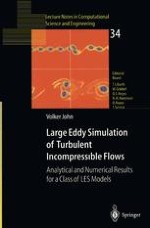2004 | Buch
Large Eddy Simulation of Turbulent Incompressible Flows
Analytical and Numerical Results for a Class of LES Models
verfasst von: Volker John
Verlag: Springer Berlin Heidelberg
Buchreihe : Lecture Notes in Computational Science and Engineering
Enthalten in: Professional Book Archive
